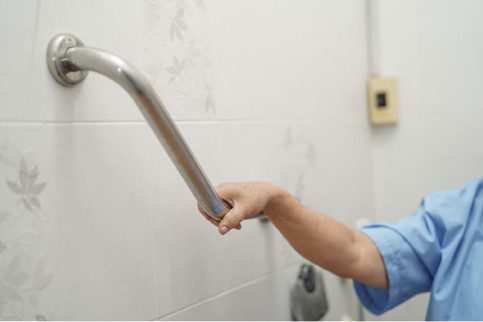Essential Fall Prevention Devices for Elderly Patients

According to the CDC, more than one out of four older people fall annually. Experiencing a fall can be an excruciating ordeal for anyone. For the elderly, it poses not only a physical threat but also a psychological one. The repercussions of a fall for those over the age of 65 are far-reaching, often resulting in fractures or breaks that lead to months of rehabilitation and a diminished quality of life. Ironically, the fear of falling can induce sedentary behavior, making individuals more susceptible to subsequent falls.
Fall prevention devices play a pivotal role in mitigating the risk for elderly citizens by enhancing gait and balance. These devices offer physical support and act as safety measures in situations where falls are more likely, such as falling out of bed. Some fall prevention devices can also help patients cope and increase their confidence in their ability to move around. In this blog, we’ll discuss various fall-prevention devices that have been proven to help elderly patients gain strength and increase confidence.
1. Overhead Track & Harness Systems:

If you want your patient to gain strength quickly while increasing their confidence, an overhead track & harness system like the Solo-Step is perfect for you. An overhead track system connects to a wearable harness and is mounted to the ceiling. Your patients can move freely around the track, giving them the ability to challenge themselves with various exercises and pieces of equipment. Overhead track systems:
- Increase mobility & safety
- Reduce physical strain on caregivers
- Improve patient confidence
- Enhances independence
2. Grab Bars:

Among the most frequently employed fall prevention devices, grab bars provide crucial support and stability in navigating challenging areas like stairs, bathtubs, showers, and toilet usage. They can be securely fixed to walls using screws, or for enhanced portability, suction grab bars are available, ensuring strength and stability. Grab bars offer many benefits, including:
- Enhanced safety in bathrooms
- Provides increased independence
- Aids in balance and stability
3. Canes and Walkers:

Addressing the unsteady gait and lack of balance that contribute significantly to falls, mobility aids such as canes and walkers play a vital role in providing stability. Canes offer support for those needing minimal assistance, while walkers, available in both wheeled and non-wheeled options, cater to individuals at a higher risk of falls. Wheeled walkers provide smooth movement, hand brakes for control, and additional features like storage baskets and seats. Canes and walkers provide benefits, such as:
- Improved stability
- Reduced strain on joints
- Assistance during weight-bearing activities
- Enhanced independence
4. Bedside Fall Mats:
For seniors who may need to visit the toilet during the night, the disorientation and lack of light pose significant dangers. Bedside crash mats act as a safety net, cushioning the floor next to the bed in case of a fall. These mats are available in various sizes, foldable for easy storage and movement, and equipped with non-skid bottoms to prevent slipping. Some benefits of bedside fall mats include:
- Fall impact reduction
- Injury prevention
- Increased safety awareness
- Increased patient confidence
5. Bed Alarms:
Motion alarm products serve as effective monitors for tracking the movements of elderly individuals prone to falls. Using alarms with “Early detection” technology acts as a preventive measure, allowing caregivers to intervene before a fall occurs. It’s essential to note that these devices complement supervision and should not replace it. Bed alarms:
- Monitor patients
- Help prevent injuries
- Provide patients with timely assistance
Beyond the immediate physical injuries, falls can lead to prolonged rehabilitation, diminished quality of life, and increased medical expenses. Implementing these fall prevention measures will help mitigate fall risks and maintain the independence and dignity of the elderly population. Investing in proactive fall prevention will enhance the overall quality of care within your physical therapy practice or healthcare facility, thus promoting a healthier and more fulfilling life for your elderly patients.
To learn more about the Solo-Step Overhead Track & Harness System, click the button below!